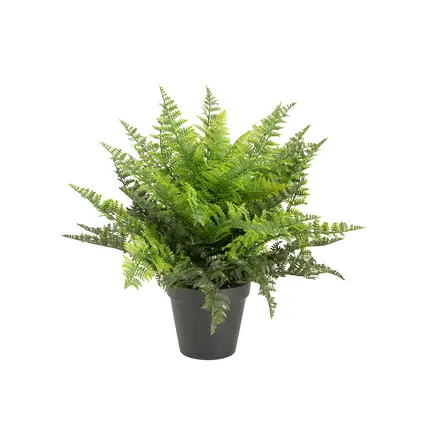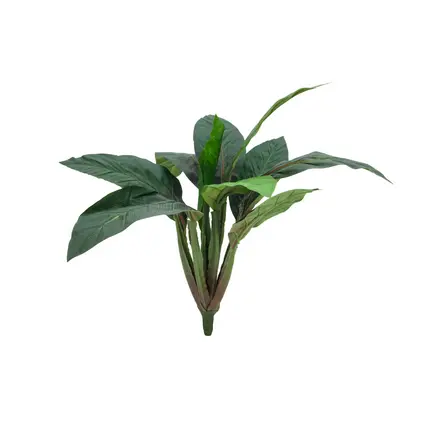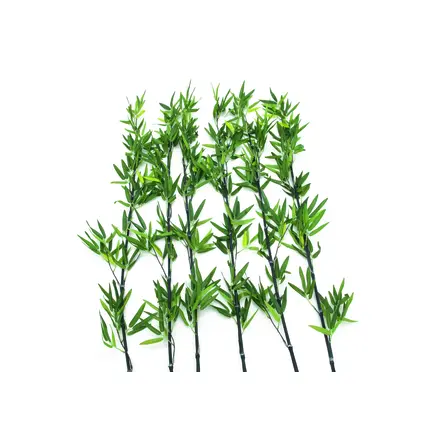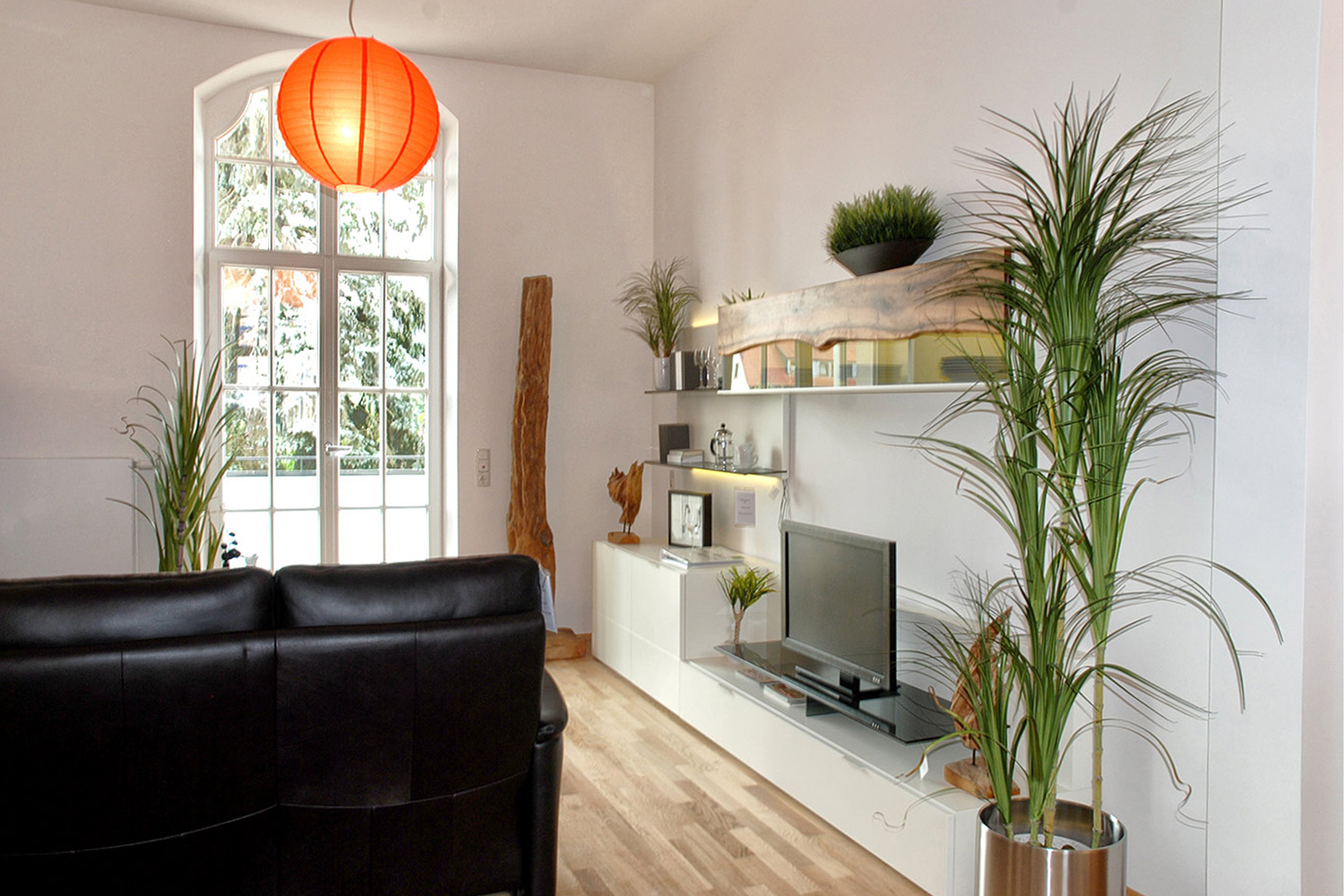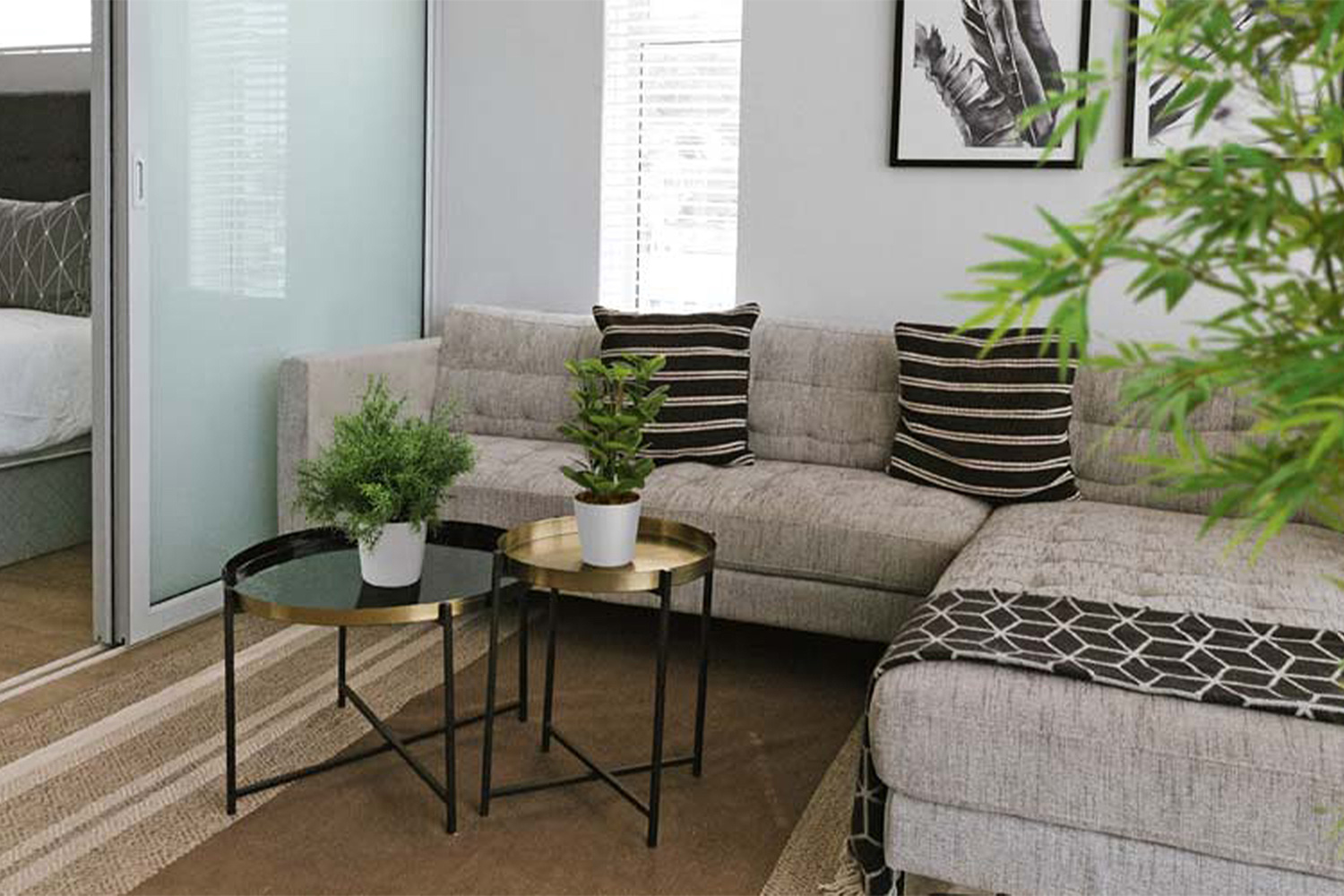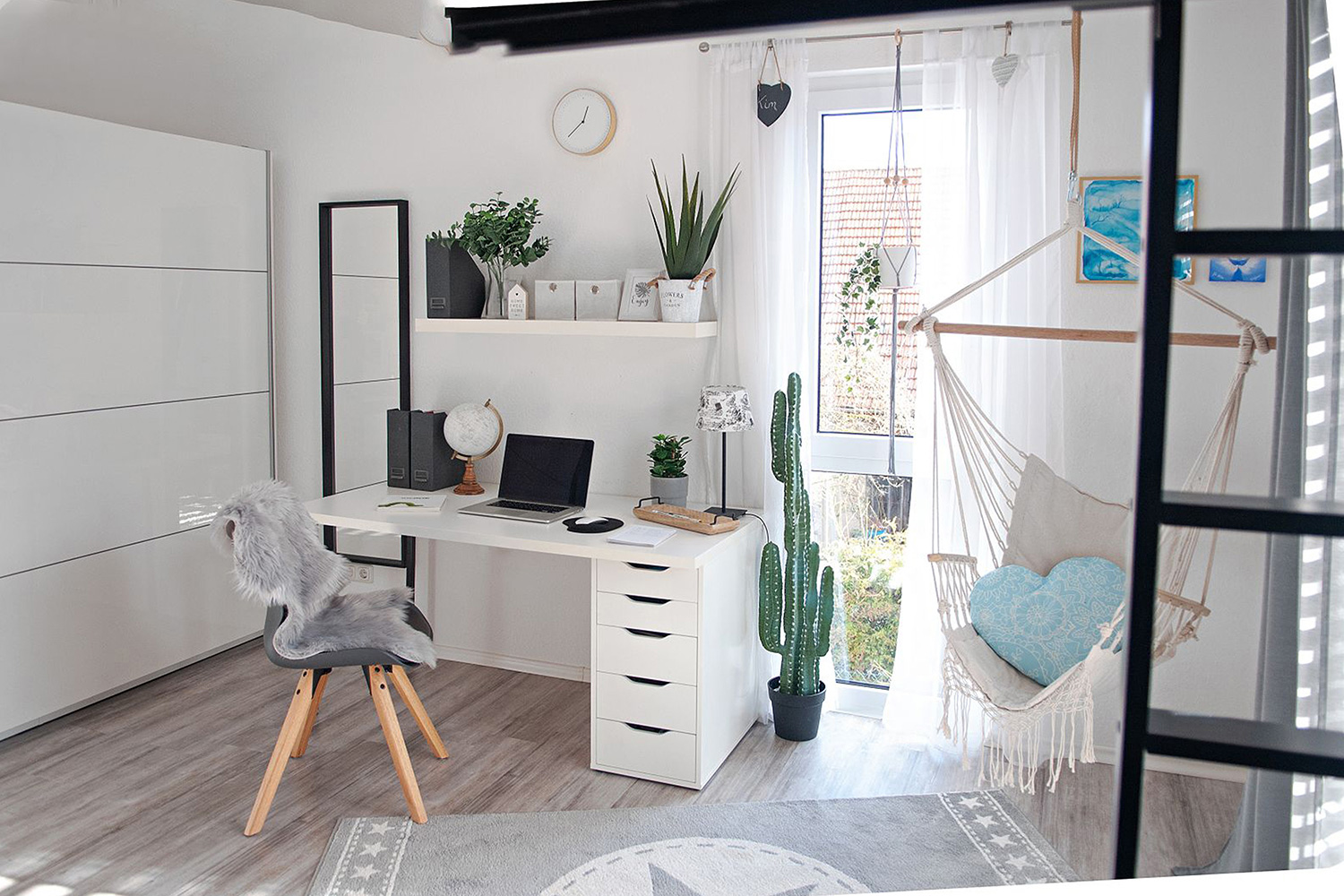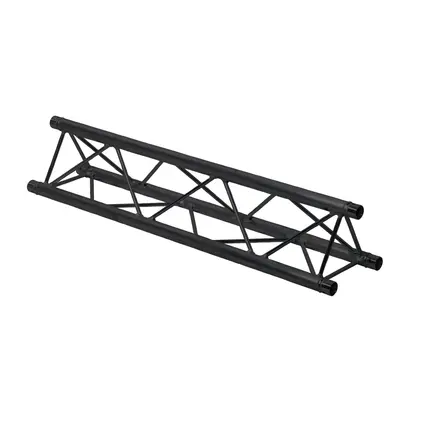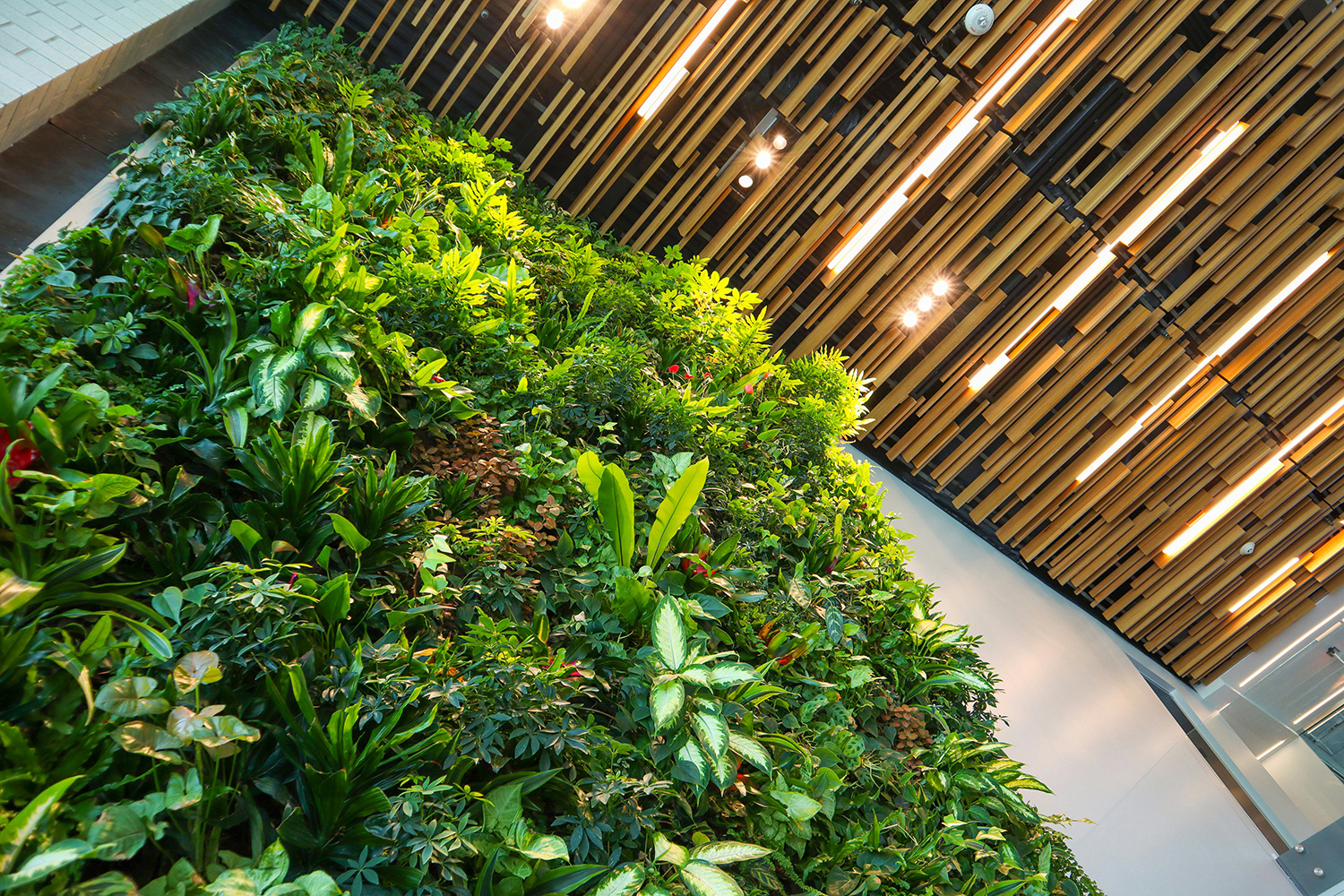
In the world of hospitality and gastronomy, it is often a challenge to make optimal use of space while creating an aesthetically pleasing environment. It must be inviting and match the interior style, but especially in these business areas, it must not obstruct walkways or workflows. There is a straightforward solution for these demands: simply change your perspective - vertical instead of horizontal! Vertical gardens, in particular, are a perfect way to implement this design approach.
Vertical gardens are a modern concept of interior and exterior decoration that is becoming increasingly popular. They are visually appealing, and real plants even contribute to improving air quality by filtering pollutants and producing oxygen. Whether adorned with real or artificial plants, they offer an effective way to bring greenery into your spaces without taking up valuable floor space. They are an excellent element for utilizing vertical space, which often remains unused, making them especially attractive for smaller spaces like offices or waiting rooms in medical practices. The application possibilities for vertical gardens are versatile: they can be installed on walls to create a calming green backdrop, hung from ceilings to create a lively, airy atmosphere, or used as room dividers to help delineate different areas. Furthermore, vertical gardens can also be used as art pieces. With a careful selection and arrangement of plants, impressive visual effects can be achieved, transforming any room into a vibrant work of art.
Contents
1. Artificial Plants: The Low-Maintenance Alternative
Since the thought of the maintenance required for real plants is often daunting, artificial plants are an excellent alternative. Modern artificial plants are realistically replicated and require neither sunlight nor watering. Various types of artificial plants can be used. Plants with different leaf structures and color nuances are particularly suitable for creating a truly unique and personal design and achieving a lively structure.
Some of the most popular types of artificial plants for vertical gardens are hanging plants like ivy, philodendron, and pothos as vines and bushes, ferns in various sizes and color gradations, grasses, and moss. With these plants, you can create a lush, green wall that looks fresh and vibrant all year round: Ferns and ivy bring beautiful texture and density, while philodendron and pothos plants with their striking leaves add interesting visual accents.
Overall, vertical gardens offer an innovative way to bring greenery into your spaces while making optimal use of the available area. They are not only an aesthetic highlight but also contribute to well-being.
2. Step-by-Step Guide to Creating a Green Picture:
To create a vertical garden with artificial plants, you will need some basic materials and tools. These include a sturdy picture frame onto which rabbit wire is stretched, as well as craft wire, wire cutters, scissors, a hot glue gun, and hot glue sticks.
The artificial plants are then attached to the rabbit wire and the back of the picture frame using craft wire and hot glue. Vary the types and sizes of the plants to create a diverse and appealing composition.
The result is a vibrant green picture that becomes a focal point in any room and enhances any interior design. It is a simple and effective way to optimize your hospitality and hotel spaces and turn them into a true marvel.
We hope these tips and ideas provide you with inspiration, and we look forward to seeing your creative space designs!
